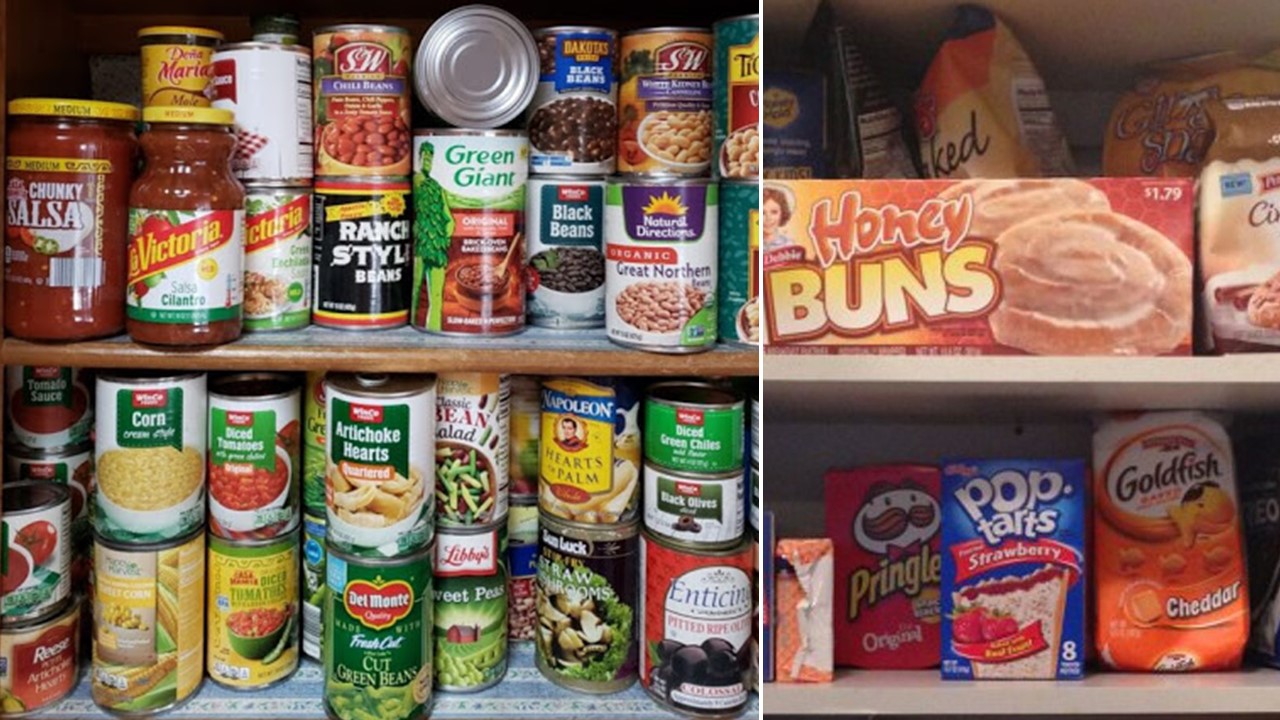
Double bacon cheeseburgers and large fries every day at your favorite restaurant are a no-go. And you already know this. But does your refrigerator contain foods that are about as bad for you? If you’re like most of us, your fridge probably does contain various items that make your everyday diet at least a little bit unhealthier — perhaps without you even realizing it.
What’s unhealthy mean? Generally, this includes foods that are high in trans fats, saturated fat, sugar, and/or salt:
1. Soda & Other Sweet Drinks
Sugary drinks are everywhere. Not only are they standard fare in restaurants and vending machines, but the drinks sold in supermarkets are usually sweetened as well (bottled teas, fruit drinks, sports and energy drinks, etc.).
Sweetened beverages are the epitome of “empty calories.” Soda, sweet tea, and fruit drinks generally contribute no nutrients, but plenty of calories. And recent research suggests that we don’t tend to compensate by eating less when we drink sweet drinks — so these are truly extra calories.
Plain water is best for hydrating the body, and should make up most of what we drink each day. But there are several beverages without calories, like green and black teas, that not only hydrate but contribute healthy antioxidants. And though skim or 1% milk has some calories, it also has key nutrients, such as calcium, vitamin D, B-12, potassium, and magnesium.
2. Mayonnaise
It’s white, it’s goopy — and it’s really easy for the calories and grams of fat to add up when you’re slathering on the mayonnaise.
The truth is that regular mayo isn’t too bad, if you’re talking about a teaspoon or two. But most mayo users spread it on thicker than that. And if you’re a true mayonnaise lover, you can rack up 360 calories and 40 grams of fat in a 1/4-cup serving.
Mayo maniacs have three better options: They can use a lower-calorie condiment instead of mayonnaise (mustard, BBQ sauce, salsa, or taco sauce); they can switch to a light mayonnaise (35 calories and 3.5 grams of fat per tablespoon); or they can pare down their portion of real mayonnaise to a couple of teaspoons (contributing 60 calories and 6.7 grams of fat).
3. Alcoholic Beverages
Not only is it possible to drink too much and abuse alcohol, but from a nutritional perspective, there are definitely better beverages you can have in your fridge.
Alcohol calories are empty calories because the body can’t use them as energy. The liver is forced to break alcohol down into fatty acids, which then accumulate in the liver. In fact, fat accumulation can be seen in the liver after a single night of heavy drinking. Liver cells and brain cells actually die with excessive exposure to alcohol.
And then there are the calories. One glass of wine (8 ounces) has around 170 calories and a bottle of beer (12 ounces) has 150. Each 1.5-ounce shot of liquor (gin, rum, vodka, whiskey) has about 105 calories, not including any soda or mixers you might drink along with it.
Less is more when it comes to alcohol. If you’re going to drink, do so in moderation. At parties or happy hours, instead of alcoholic drinks consider drinking mineral or soda water with a wedge of lemon or lime; hot or iced coffee or tea; or diet soft drinks in moderation.
4. Processed Lunch Meat
Lunch meats, including deli cold cuts, bologna, and ham, make the unhealthy list because they contain lots of sodium and sometimes fat, as well as some preservatives like nitrites.
Processed meat — defined as any meat preserved by smoking, curing, or salting or with the addition of chemical preservatives — is linked to an increased risk of colon cancer, according to the American Institute for Cancer Research. Some experts suspect that certain substances used as preservatives in processed meats may change into cancer-causing compounds in the body.
Further, the sodium in one small serving of lunch meat (one slice of bologna or five slices of salami) ranges from 310 to 480 milligrams. A diet high in sodium is thought to increase the risk of high blood pressure, a major cause of heart disease and stroke.
What should you eat instead? You eliminate the sodium and preservatives and get straight to the protein, vitamins, and minerals when you use freshly roasted and sliced turkey, chicken, or roast beef in your sandwiches. Roast your own, or look for deli brands low in nitrates and sodium.
5. Hot Dogs and Sausage
Also part of the processed meat category, hot dogs and sausage are a staple in many a refrigerator. Many people turn to them for a quick dinner entree or, in the case of sausage, as a featured food at breakfast or brunch.
Hot dogs and sausage tend to contain lots of sodium (520-680 milligrams per 2-ounce serving) and fat (up to 23 grams of total fat and 7 grams of saturated fat per serving). Most Americans take in more than double the recommended amount of sodium, according to the CDC.
It’s a good idea to substitute leaner and lower-sodium meats — such as roasted skinless poultry, pork tenderloin, and roast beef — and fish and seafood for frankfurters and sausage in meals and recipes. Even grilled vegetables such as portabella mushrooms, eggplant, or roasted red pepper will often suffice.
But if it’s got to be a frankfurter or sausage, consider the lower-fat and nitrate-free options available in most supermarkets, such as “light” franks, turkey kielbasa, or soy-based sausage substitutes. They may not be much lower in sodium than traditional products, but the amounts of total and saturated fat are often cut in half.
6. Whole-Milk Products
While dairy products contain protein, calcium, B-12, and riboflavin, whole-milk products also have ample amounts of fat and cholesterol. If you drink 16 ounces of whole milk a day, for example, it adds up to 1,904 calories, 105 grams of total fat, 59.5 grams of saturated fat, and 315 milligrams of cholesterol in a week’s time.
The good news is that lower-fat options are available for most dairy products, including milk, cheese, yogurt, cottage cheese, and cream cheese.
7. Gourmet Ice Cream
In many an American freezer, you’ll find a pint of gourmet ice cream or a box of decadent ice cream bars.
Even if you stick to the modest 1/2-cup serving size suggested on the container, it can send your daily totals of saturated fat, total fat, and calories into overload.
A serving of Ben & Jerry’s Chocolate Chip Cookie Dough, for example, has 270 calories, 14 grams of fat, 8 grams of saturated fat, 65 milligrams of cholesterol, and 25 of grams sugar. One-half cup of Haagen-Dazs White Chocolate Raspberry Truffle will give you 310 calories, 18 grams of fat, 10 grams of saturated fat, 105 milligrams of cholesterol, and 28 grams of sugar. And a more typical serving for most people is one cup, which doubles the totals for fat, calories, cholesterol, and sugar.
Instead, try some of the great-tasting lower-fat, lower-sugar, and lower-calorie ice cream options you can find in any supermarket. The light version of Safeway brand Mint Chocolate Chip, for example, has 120 calories, 4.5 grams of fat, 3.5 grams of saturated fat, and 14 grams of sugar for a 1/2-cup serving. For an even healthier dessert, enjoy some fresh fruit with plain or nonfat Greek yogurt.
8. Creamy Salad Dressing
How many bottles of creamy salad dressing are sitting in your refrigerator? The standard refrigerator fare includes ranch, Thousand Island, and/or blue cheese.
Each two-tablespoon serving of these traditional creamy dressings adds about 120 calories, 12 grams of fat, 2.5 grams saturated fat, and 380 milligrams of sodium to your salad. Here’s the worst part though: most people drizzle on double this amount of dressing (1/4 cup).
So aim for downsizing to a two-tablespoon serving. You might also find some lighter dressings that you enjoy.
9. Stick Butter or Margarine
If it can hold its shape in stick form, your butter or margarine is probably high in saturated fat, because it’s the saturated fat that makes fats more solid at room temperature. In years past, most margarine also contributed high amounts of unhealthy trans fat, though many have been reformulated.
It’s easier to use more stick margarine or butter than you think because its firm texture makes it difficult to spread lightly on food. And each tablespoon will give you 100 calories and 11 grams of fat. Butter has 7 grams of saturated fat per tablespoon; stick margarines have 2 grams saturated fat and 1.5 to 2.5 grams trans fats per tablespoon.
Switching to canola oil or olive oil in your cooking and baking when possible is the best option because these fats are rich in mono- and polyunsaturated fat. But if you need a spreadable fat on the table or in a recipe, try a reduced-fat margarine in a tub with no trans fat and low amounts of saturated fat. If only butter will do, use whipped butter instead. It’s easier to spread lightly, and cuts the calories, fat, and saturated fat by a third.
10. Frozen French Fries
Potato side dishes such as hash browns, French fries or tater tots are popular accompaniments for breakfast, lunch, and dinner. Many American freezers have a bag of frozen potato products ready to bake with a moment’s notice.
Just one small serving (3 ounces) of some popular potato products — such as criss-cut French fries, tater tots, or curly fries — contain 8 to11 grams of total fat, around 3 grams of saturated fat, 390 to 540 milligrams of sodium, and about 160-190 calories. And many potato lovers eat double this amount in one sitting.
Your best bet is to eat unprocessed potatoes, such as baked potatoes or roasted red potatoes, because they give you all the nutrients of potatoes without added fat, saturated fat, or sodium. Some frozen hash browns contain no added fat, so look for zero-fat grams on the label. If you need frozen French fries, the steak fries are often the lowest-fat option, but check the label to be sure.








